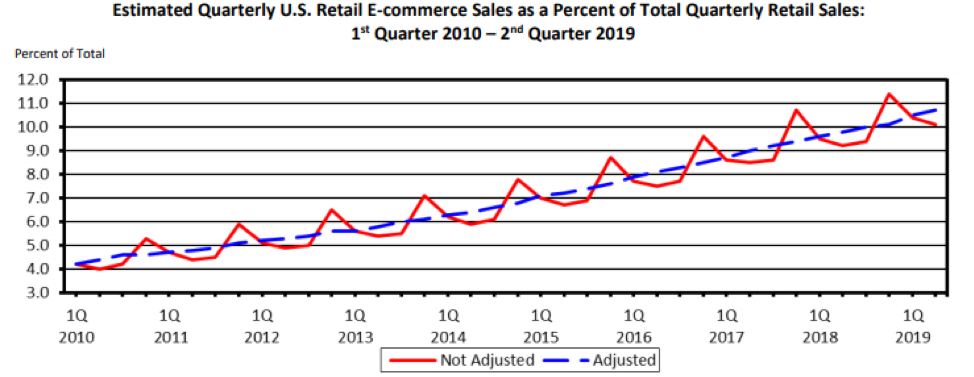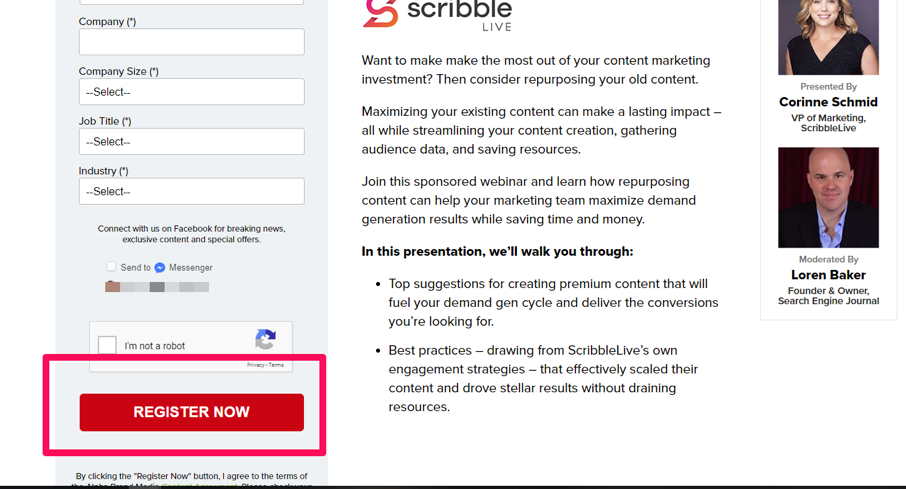6 important features every eCommerce landing page needs to be effective
The ecommerce landscape is getting more competitive every year. In the second quarter of 2019, ecommerce sales rose 4.2% over the previous quarter (PDF). In fact, according to a Census.gov study, ecommerce sales have grown consistently over the past few years.

That is unlikely to change as more and more shoppers turn to the internet for everything from groceries to fashion items.
For ecommerce brands, standing out in the competitive landscape is challenging. If you are just starting your ecommerce business, how do you help your products stand out and ensure customers choose you over the dozens of other options, including big names like Amazon and Walmart?
One of the most effective strategies to drive ecommerce sales is to leverage dedicated landing pages. In fact, if you aren’t using landing pages for your ecommerce businesses, you are likely losing out on customers, conversions, and even revenue.
What’s the Difference Between a Product Page and a Landing Page?
A product page lists the features, uses, and design elements of a specific product. For example, it might include detailed information about where the item was manufactured and its dimensions.
A landing page is a stand-alone web page designed to target specific kinds of visitors and encourage them to take a single action or address a specific problem. This might mean encouraging a customer to choose your product over another, sign up for your newsletter, or click to learn more about a specific product.
How do you ensure your landing pages are effective? Here are six features every ecommerce landing page needs to be more effective.
1. Targeted Language
Because the traffic to your landing page is targeted, you can better predict what products they might be interested in, or what may be holding them back from making a purchase.
Use this information to speak directly to the consumer. For example, a landing page for a younger audience might use a more casual tone. Or, if you target both electricians and HVAC companies, you could create landing pages for each that address their unique needs.
2. Fast Load Times
The average internet user is not willing to wait for your landing page to load, particularly when it comes to mobile devices. You have just a few seconds to grab their attention before they back out and head to a competitor.
To increase page load speeds, WhoIsHostingThis suggest choose a hosting provider that offers solid-state drives and fast server response times. They may also offer features like lazy loading or caching that will decrease how long it takes a page to load.
In addition, only provide the necessary content. The more content you add, the longer your page might take to load. Videos and images can add value, but may also slow down your page load. Don’t trade one for the other.
3. Clutter-Free
Too much clutter can increase page load times, but it also dilutes your message. Your landing page should aim at encouraging one action. Thus, you don’t need to include tons of images and rows of copy.
Instead, keep your landing pages clean and clutter-free. Link to additional resources as needed. See how Magento does this in the following landing page aimed at users who want a demo of their product.

They include a quick list of benefits, then get right to the point: here’s how to book your demo.
4. Customer Reviews or Testimonials
Social proof can encourage purchases by reducing customer apprehension and overcoming barriers by showing that other customers have used and liked your product or service.

Classy Career Girl, a website for women looking to build or grow their careers, uses this strategy for their physical planners by sharing social media posts from happy customers on their landing page.
Ecommerce businesses can include reviews by embedding them from their social platforms or adding pictures and quotes from online reviews, Google, or even those gathered directly from customers. Be sure to include reviews that address specific pain points your customers face.
5. High-Quality Visuals
A picture is worth a thousand words, but when it comes to ecommerce, pictures can be worth much more. If you are selling physical products, people want to be able to imagine what the product will look like in their homes (or wherever your product might be used.) Be sure to include several high-quality images from several angles, and include a 360-degree photo if possible.
Even if you are selling digital products or services, the quality of your images matters. With the rise of online photo editing and graphic design, there is simply no excuse to use pixelated, low-quality images.
6. A Prominent Call To Action Button
Landing pages are most effective when they are used to encourage one specific action. That action will vary based on the product or service you are trying to sell, of course. But a prominent CTA button is a requirement no matter what your business sells.
Based on the purpose of your landing page, your CTA button might say “Purchase Now,” “Add to Cart” or, as in the example below, “Register Now.”

Be sure to use clean language that explains precisely what the desired next step is and use colors that stand out from the images and content on the rest of the page.
Don’t be vague or use unclear language like “Next Step” or “I want in!” If you want your audience to take action, tell them what to do. Don’t make them think.
Final Thoughts
The features above should be included in every ecommerce landing page. However, the way those features look might be very different based on your audience and industry. For example, you might find a red CTA button doesn’t perform as well as a blue button.
Before rolling out huge changes across all your landing pages, use A/B testing to see what resonates best with your audience. Sometimes even a small change (like a CTA button color!) can have a significant impact on conversions.
